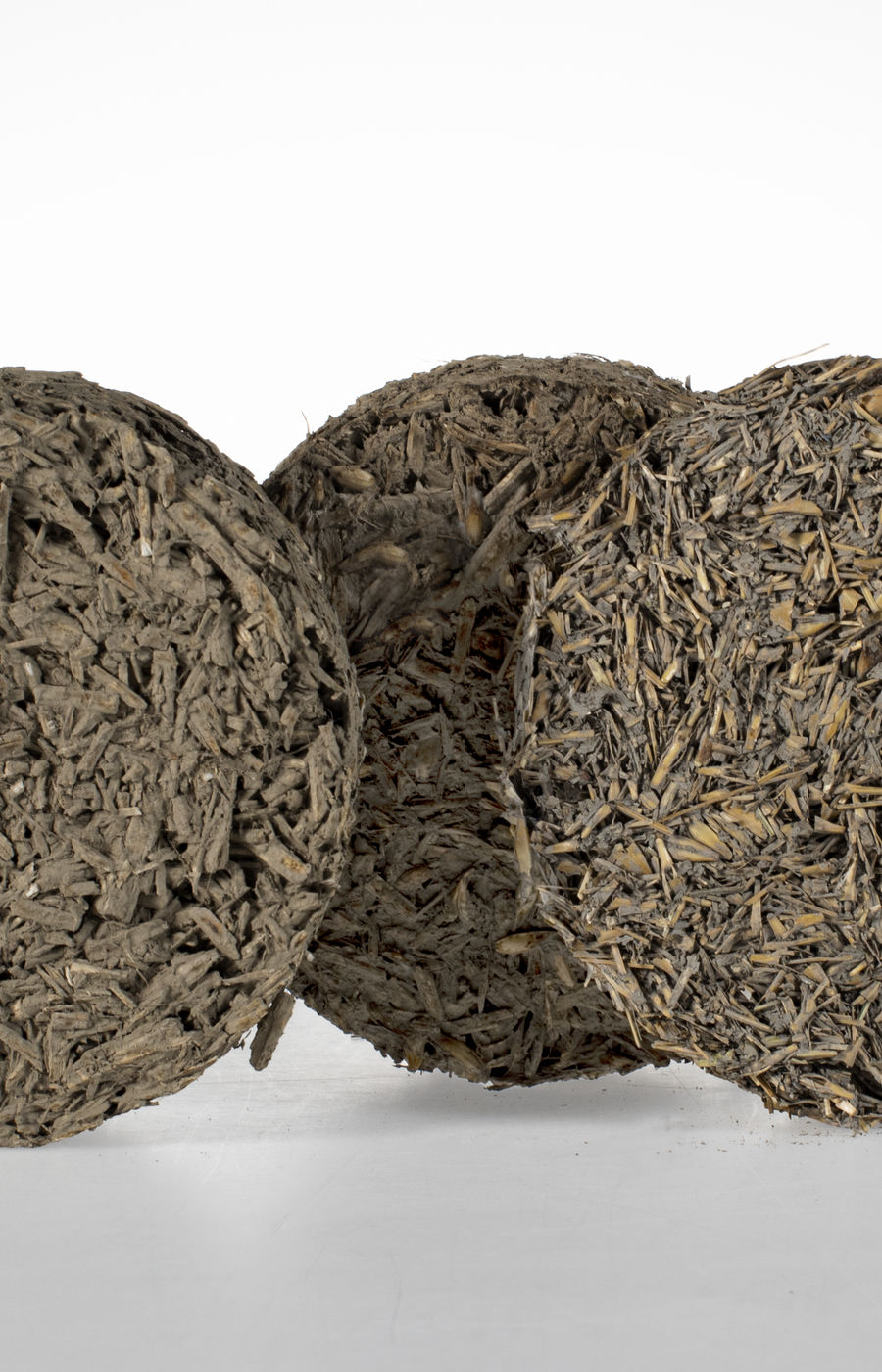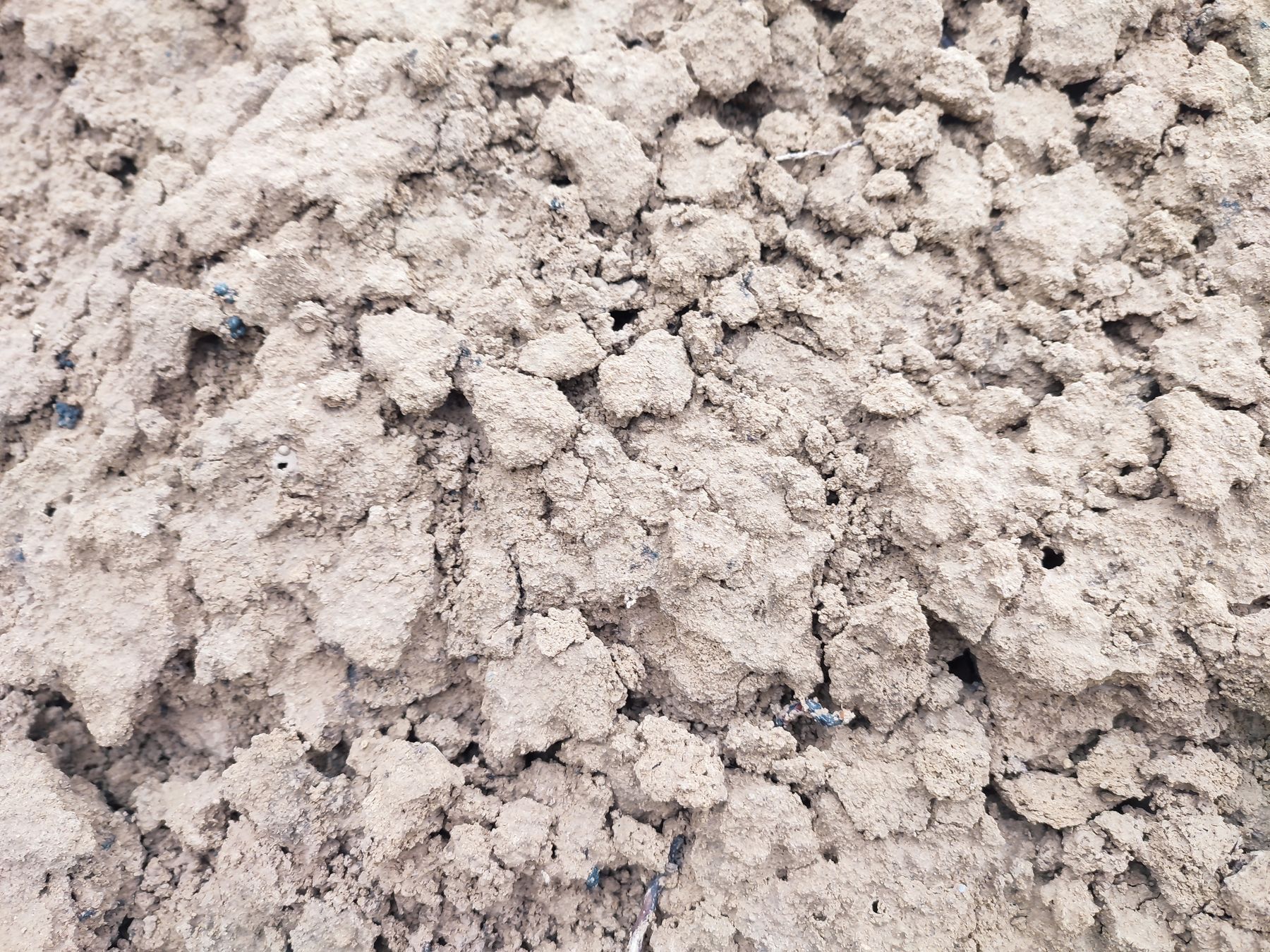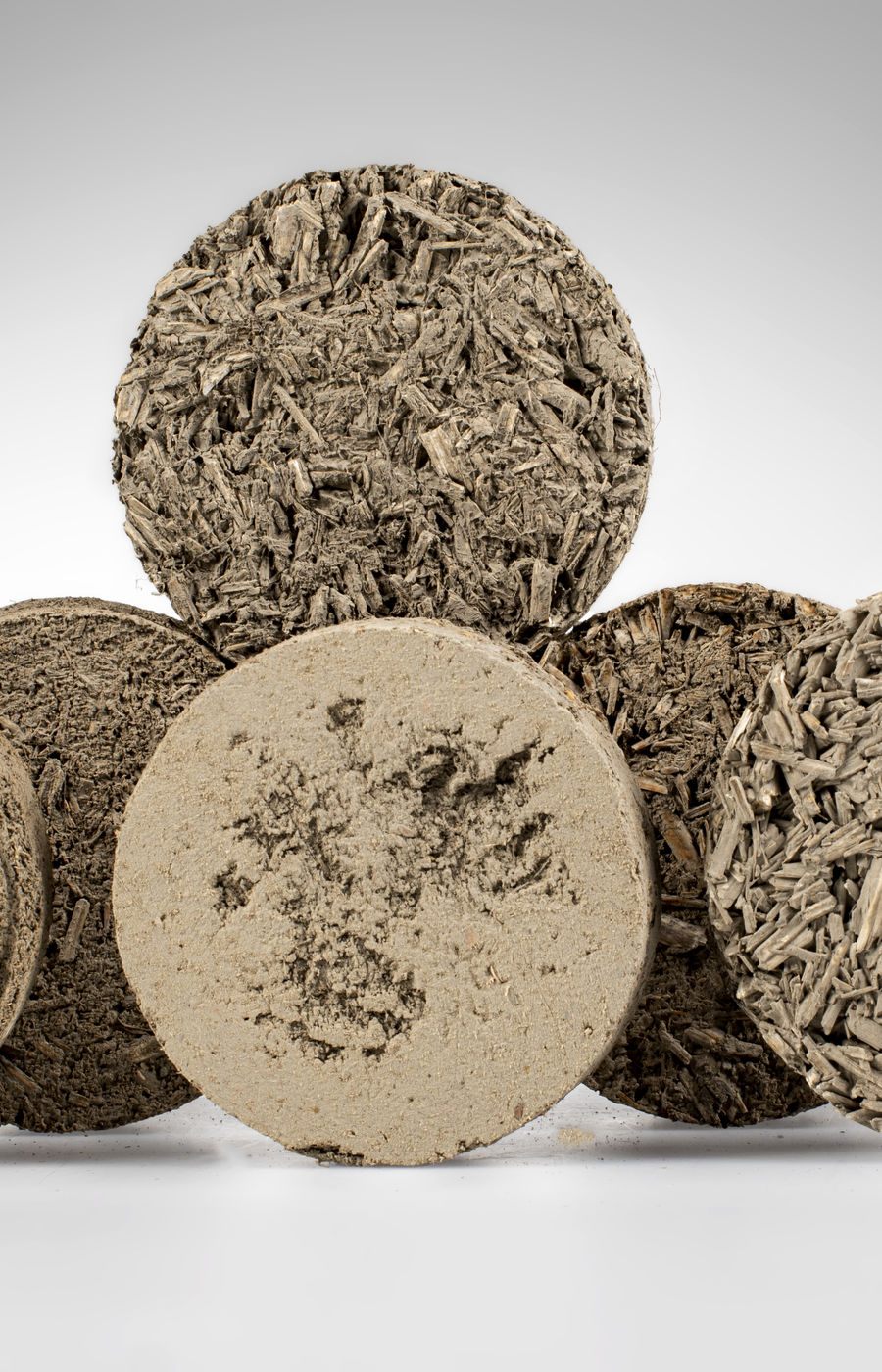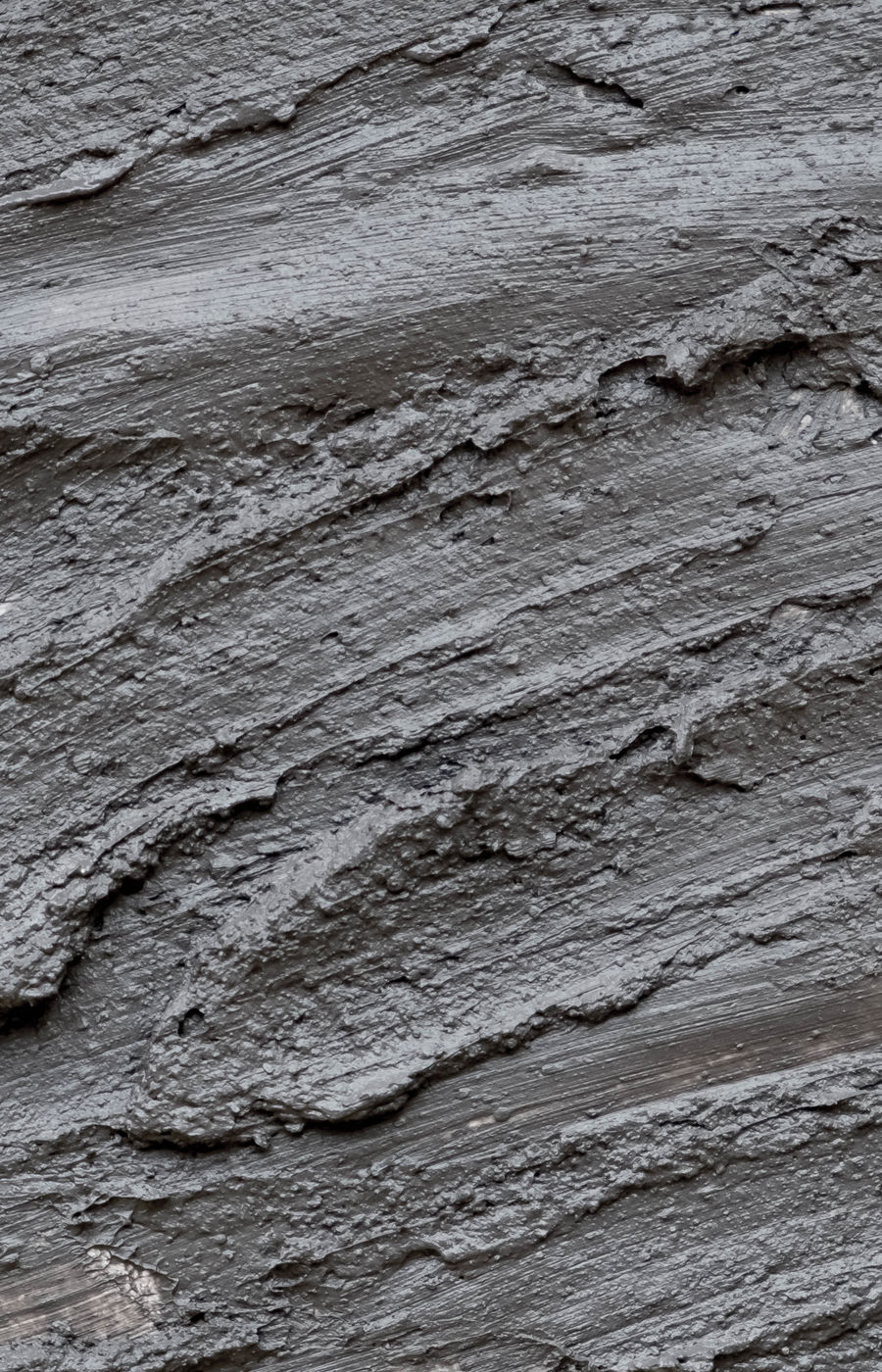
Light clay
A material of the past, present and future
Clay is a truly remarkable material. It’s made of particles smaller than human blood cells and has the ability to wrap itself around every piece of silt, sand and stone to form a bond. Clayey soil is widely present in all continents and regions, and that’s why we humans have made use of clay throughout our entire existence.

Light clay is a slurry mixture of liquid clay and a bio-based fibre like straw or wood waste. It can serve as an insulation material or be made into bricks or non-load bearing walls when packed into timber frames. When the clay dries, it binds the straw and forms a beautiful wafer-like structure that is surprisingly durable.

Architect Johanna Hyrkäs is researching light clay and experimenting with different types of clayey soils and organic fibres such as straw, wood chip, demolition wood, agricultural side streams and even waste textiles. Because of its lightweight structure, light clay has excellent insulation qualities and could become an eco-friendly replacement for traditional fiberglass insulation panels.
Clay can be obtained directly at most construction sites, avoiding transportation emissions. Moreover, light clay is forever recyclable and reusable, thanks to the absence of firing. What better way for a building to fit into its environment than being built from materials sourced from the land it stands on?
